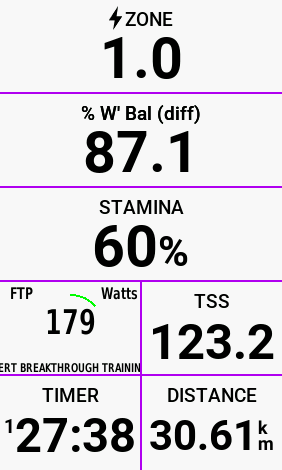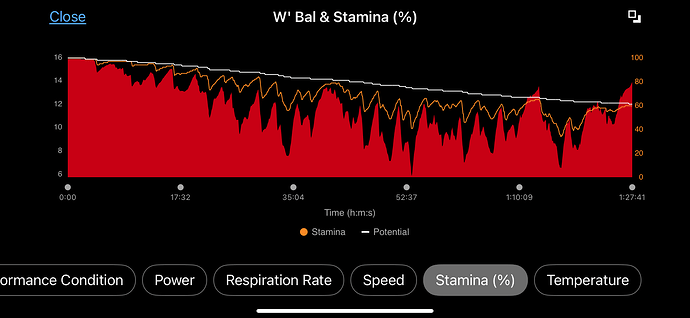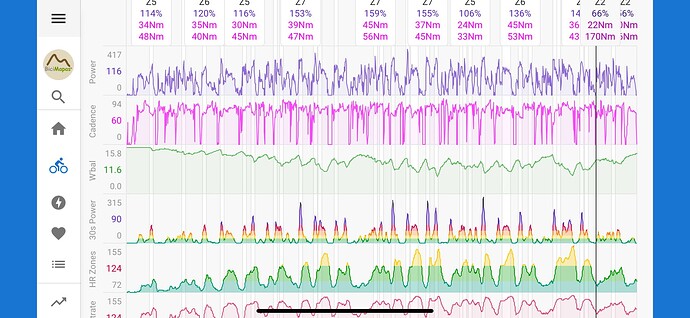Hello,
Just sharing an interesting finding I made regarding W prime and Garmin Stamina.
I was asked by one of the readers of our “Tracking Cycling Fitness With Intervals ICU” ebook
([EBook] Tracking Cycling Fitness with Intervals.icu)
about the W’ (W prime) option in the settings menu that was not mentioned in the ebook, because at the time I was not using it at all. So, I started to find out what this is all about.
A very simplified summary of my findings is:
There are 2 power training models that I will call FTP and CP respectively.
FTP comes from the Coggan et all authors, creators of Training Peaks and authors of the Training and Racing with a Power Meter Book. This is the method I was familiar with and have used since I started training with power. It is the most known and used methodology.
The second method CP, meaning Critical Power, which I had heard of but not really given it a look, seems to be more recent and is getting more adopters as, per the information I got, has more scientific support than FTP.
Both establish a reference target threshold value obtained with different approaches that I will not talk about in detail in this post but that are defined as follows:
FTP is defined as the maximal sustainable power for 60 minutes.
For CP I found several definitions but all of them seem to agree that it is the sustainable high intensity power that can be maintained for 30 to 40 minutes.
According to the research I made, FTP and CP are not the same from the physiological point of view, but may be very close in value, and are often used interchangeably.
When CP is tested for, 2 parameters are obtained, the value of the Critical Power as well as what is known as W prime or Anaerobic Capacity which is the amount of energy that an individual can use in anaerobic efforts, that are above CP (or above FTP if you consider them to have the same value).
W prime is the parameter that should be entered into the Intervals.icu settings page.
There are several options to get this value, one being a proper CP test but also may be taken from the intervals.icu power page under the Power Curve graph, which is what I did.
I also added the W’ chart in my activities page to get an idea of the information it provides.
After a few rides, I realized I had seen that type of performance data before in my Garmin. It looked very close to the Stamina chart available in recent devices and I thought would be interesting to compare them, both during and after a ride.
Turns out there is a W prime data field in Connect IQ called W’ Balance (W Prime Balance) that can track it during a ride in real time as well as generate a graph showing its performance upon completing the activity. The parameters required by the field to work properly can be taken from intervals, so I used my FTP as CP (as intervals.icu does), entered my W prime value and set the “differential” method to calculate it, which is the one Intervals.icu uses as well.

Then I rode and compared the performance of both the Stamina and W prime along the ride. Often they were very close together, with differences in the recovery times but eventually getting to very close values. The W prime recovered faster than Stamina for the most part. At the end of the ride they showed different values on my 1040.

But looking at the data in Garmin Connect, that allows to overlay the W prime curve with the Stamina one, their behavior is quite similar. The red curve is from the data field and the yellow one is Garmin’s Stamina
And it seems same behavior can be seen in the W prime balance graph in interval.icu.
It would be interesting to overlay the 3 curves to further compare them.
So, if you have a Garmin device that does not support Stamina and you are interested in tracking it, you may get and add the the W’ Balance (W Prime Balance) data field, use the W’ value from the intervals.icu power chart (or do a proper CP test) and have control of your available anaerobic energy tank, especially if you plan to do anaerobic interval training.
Greetings


